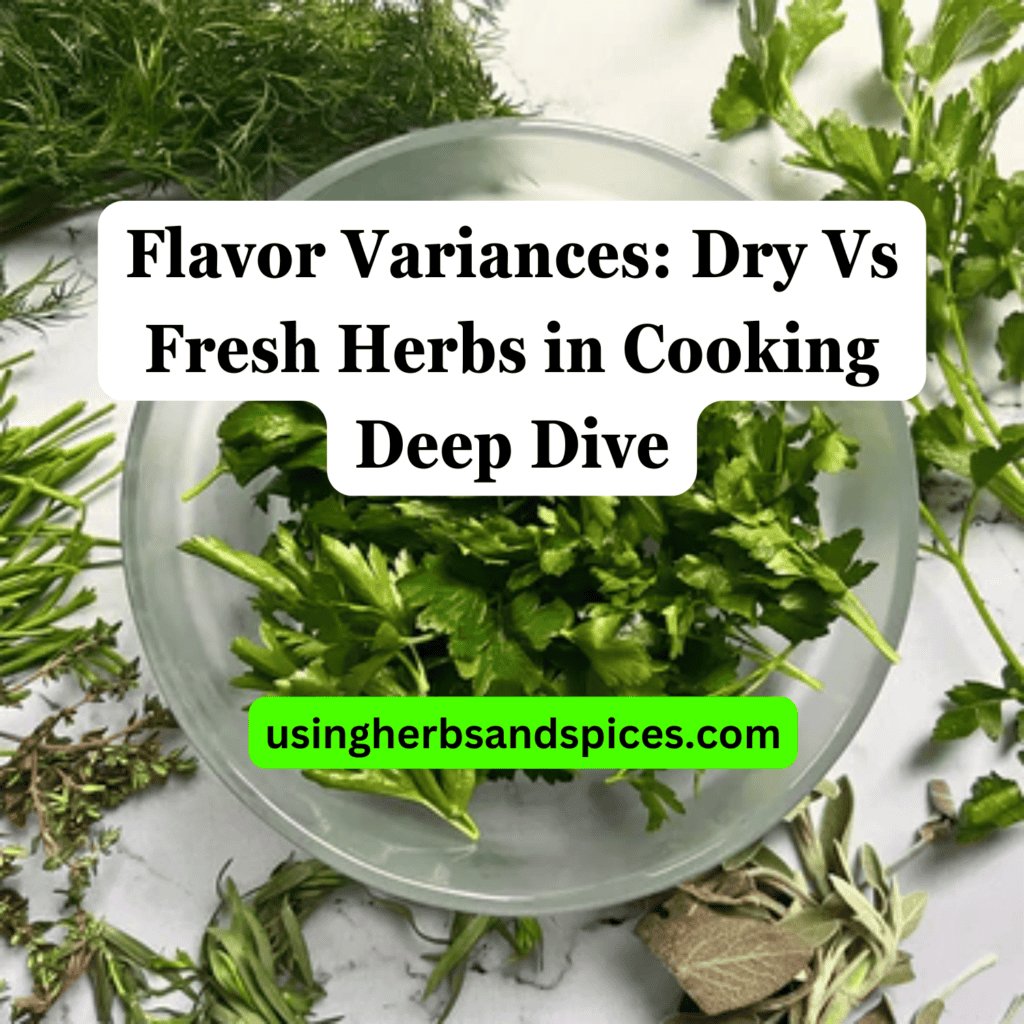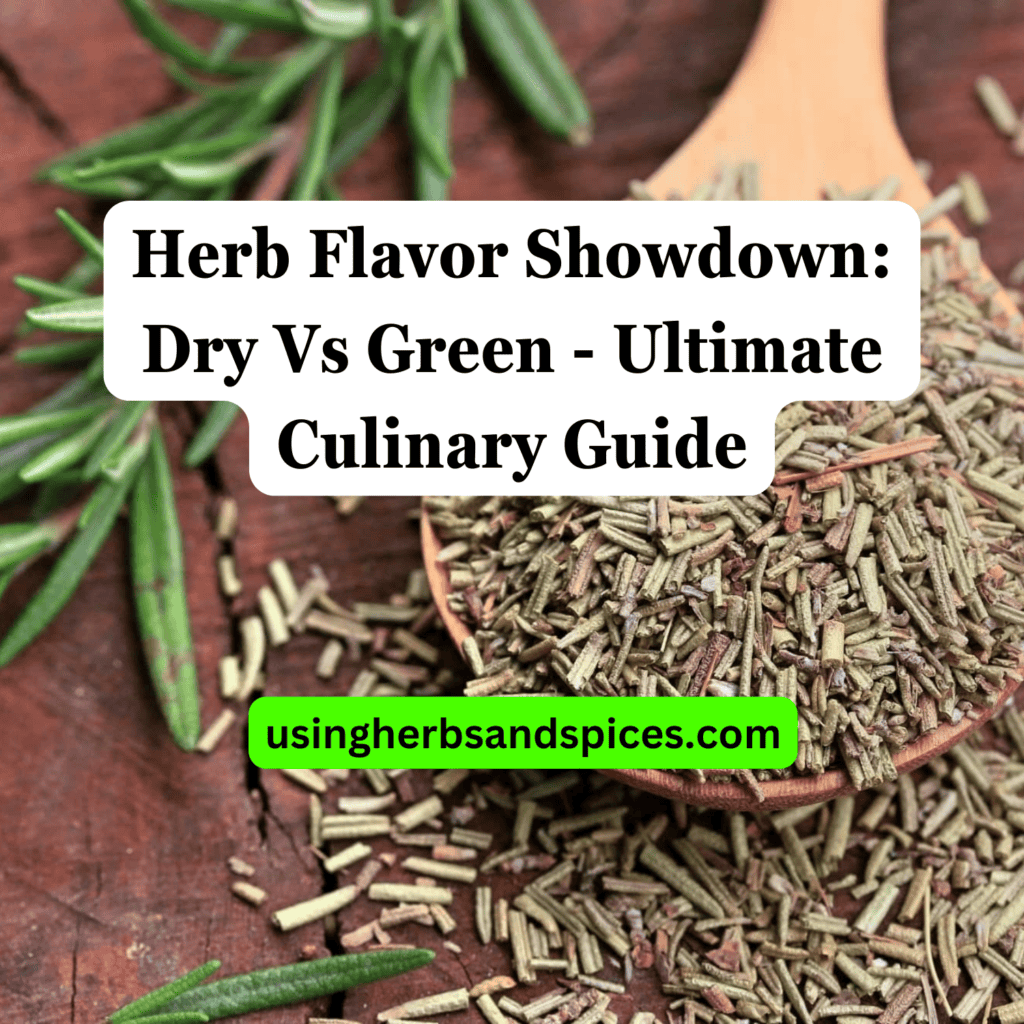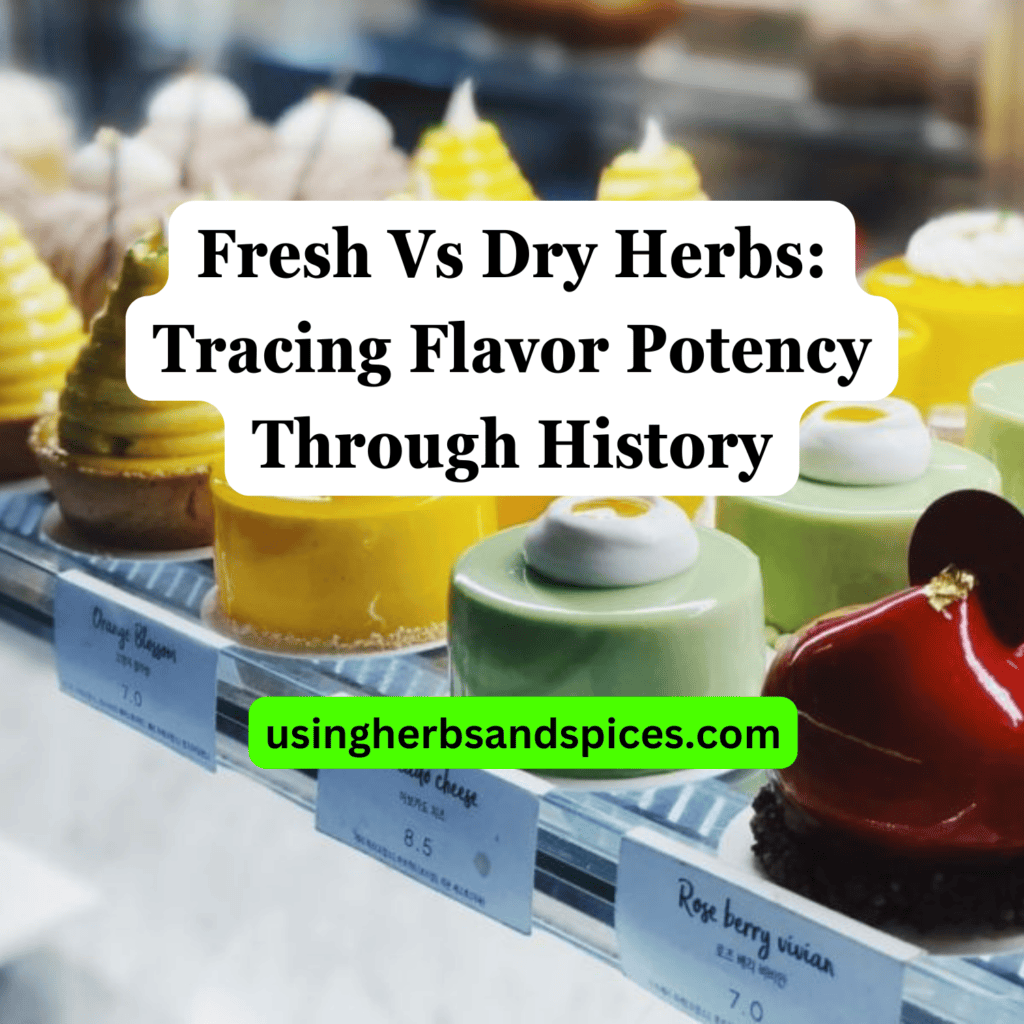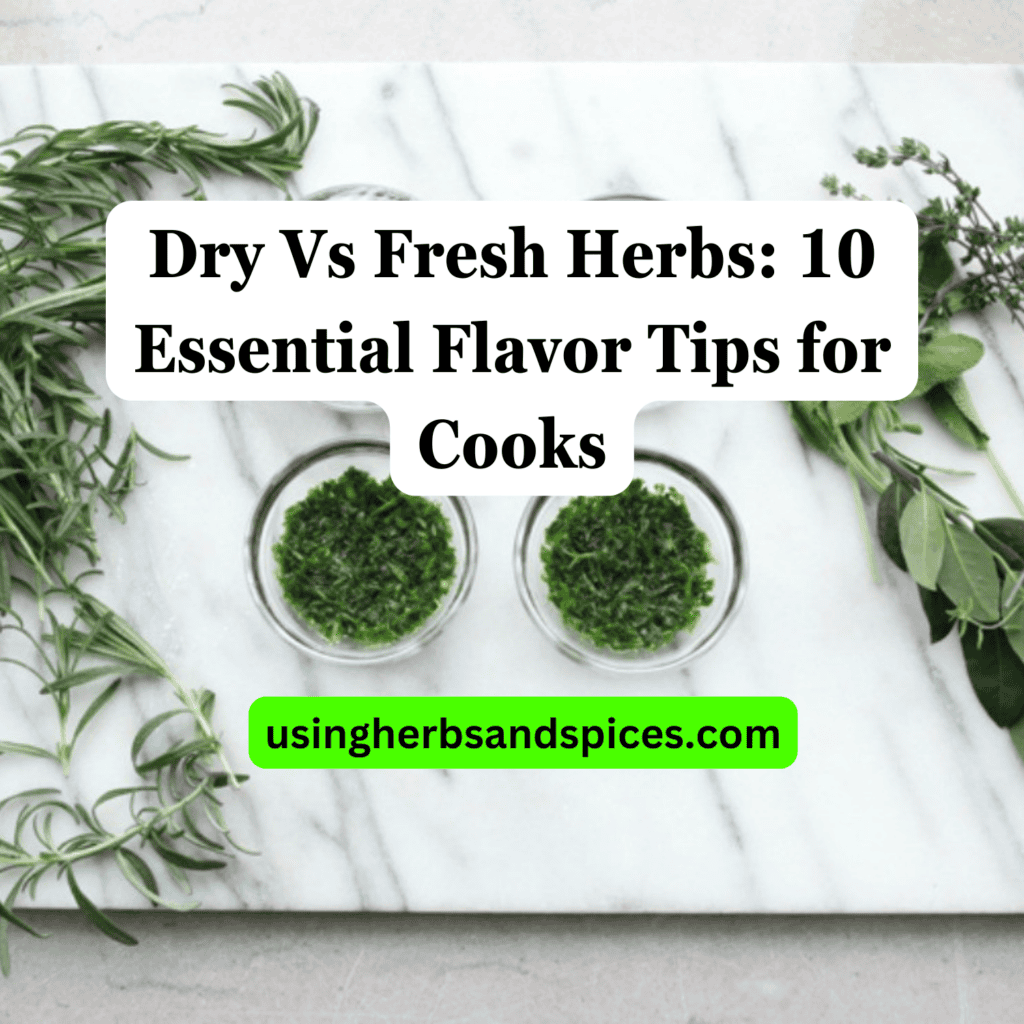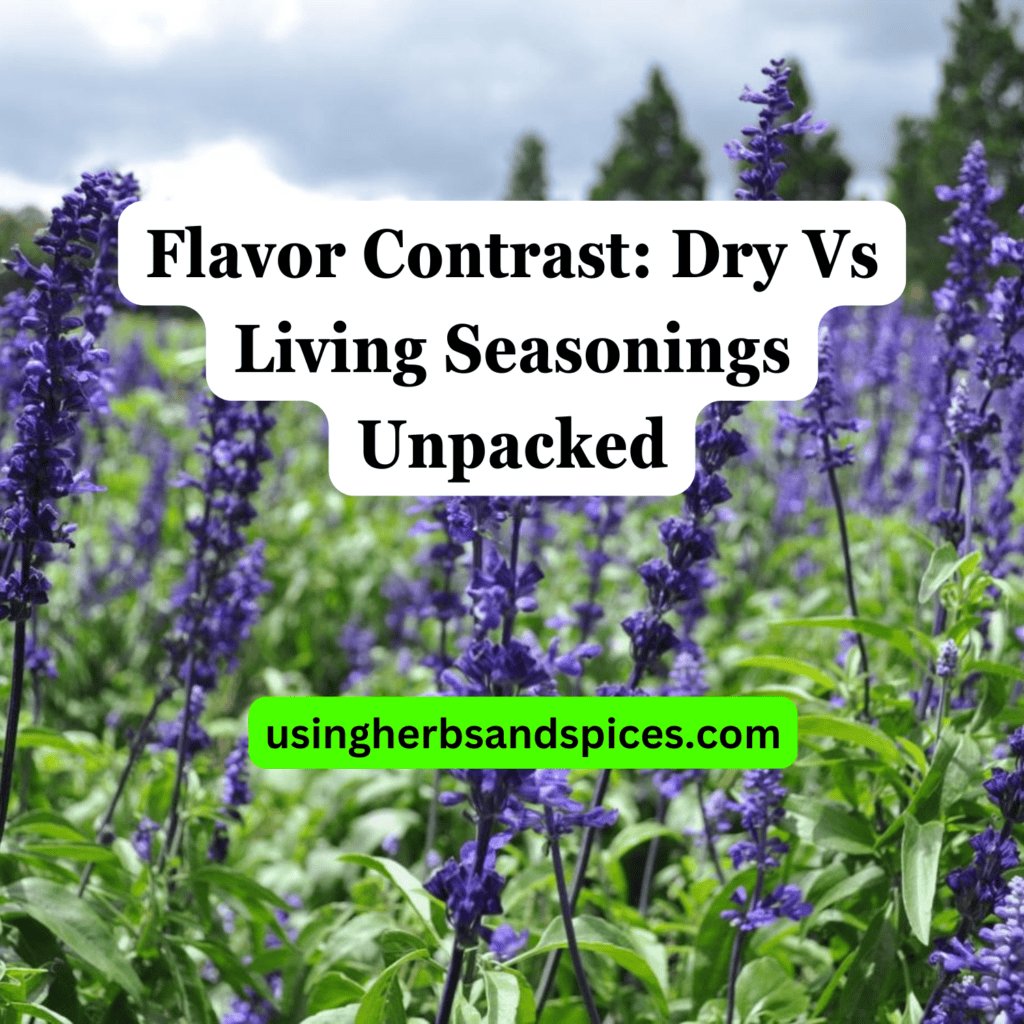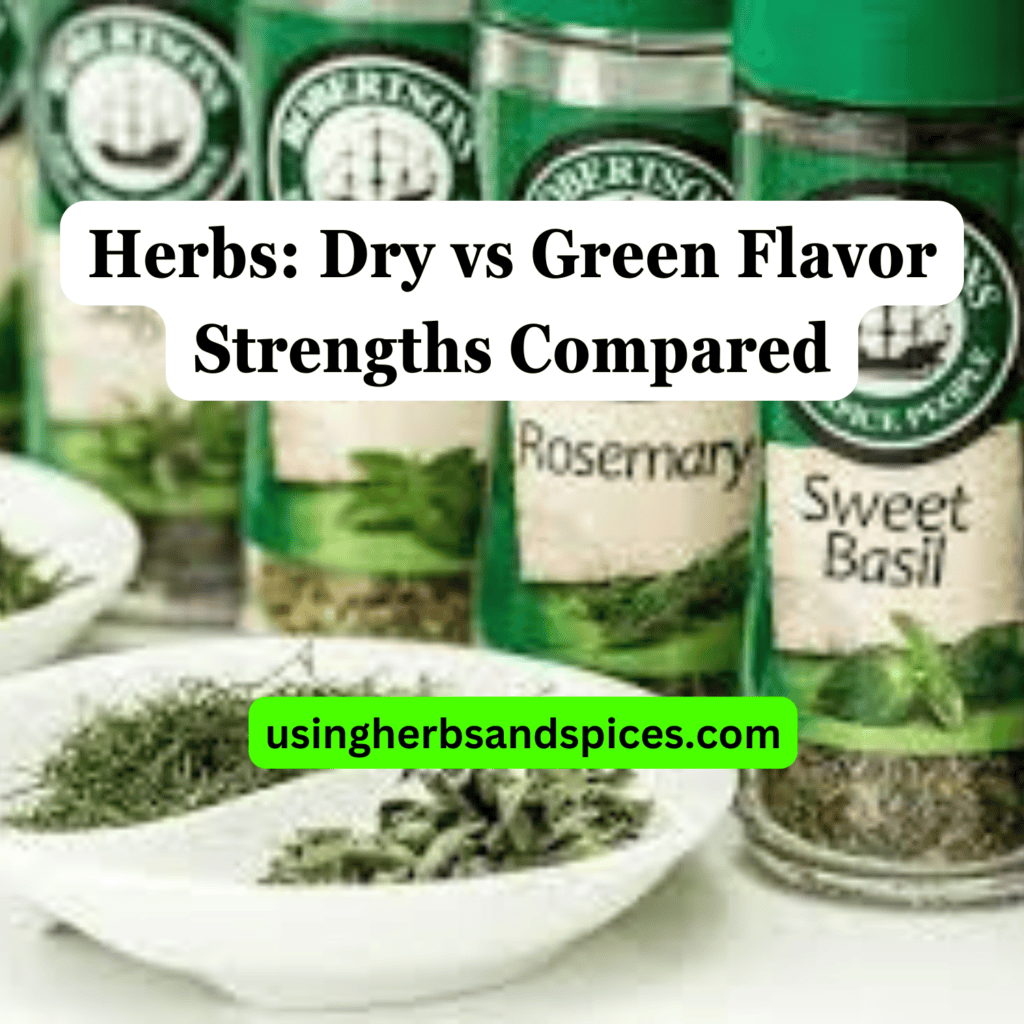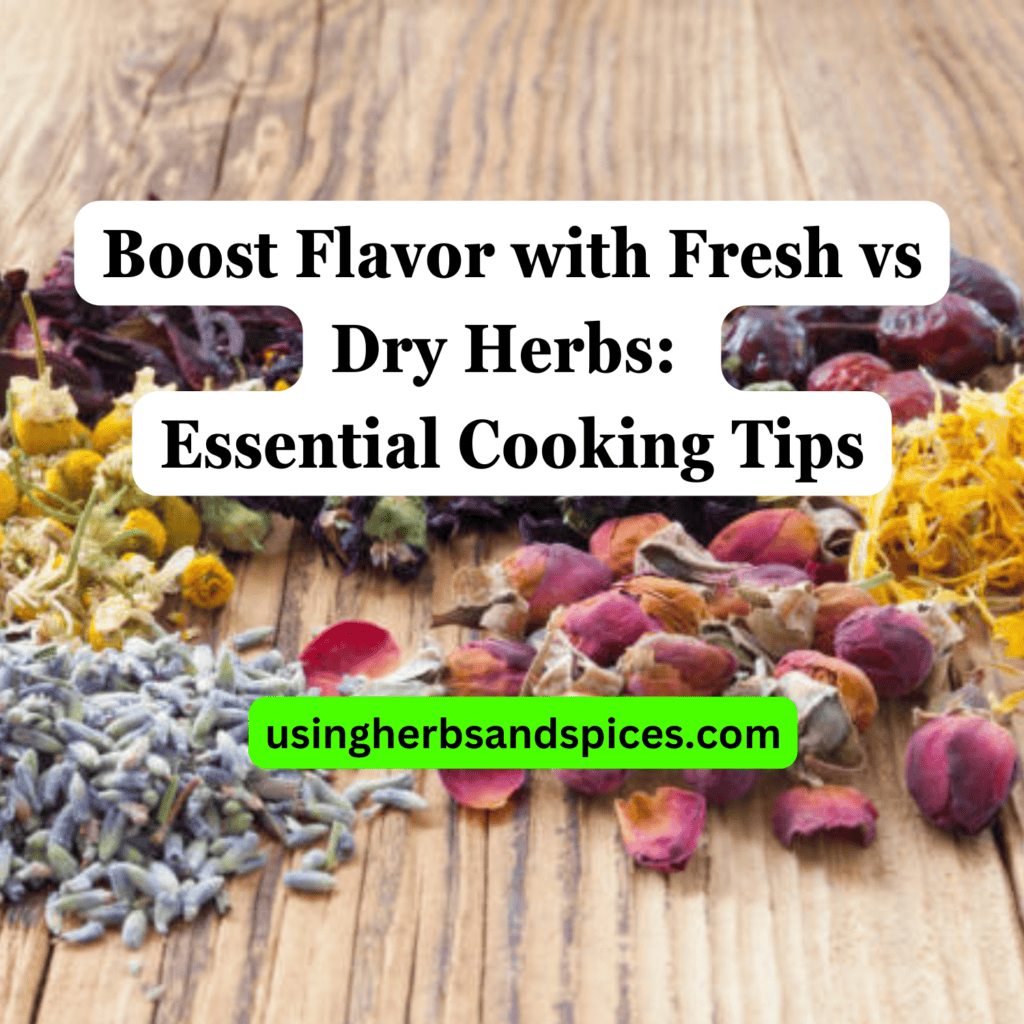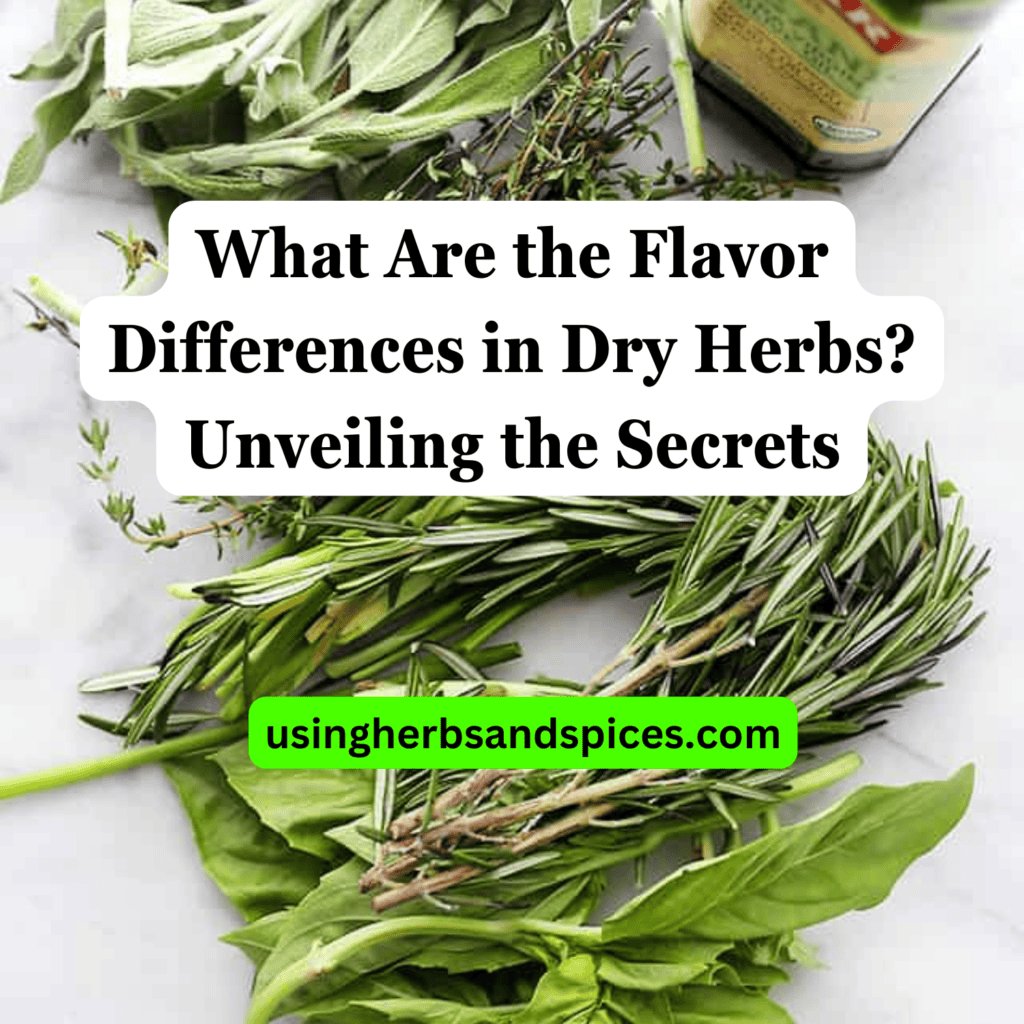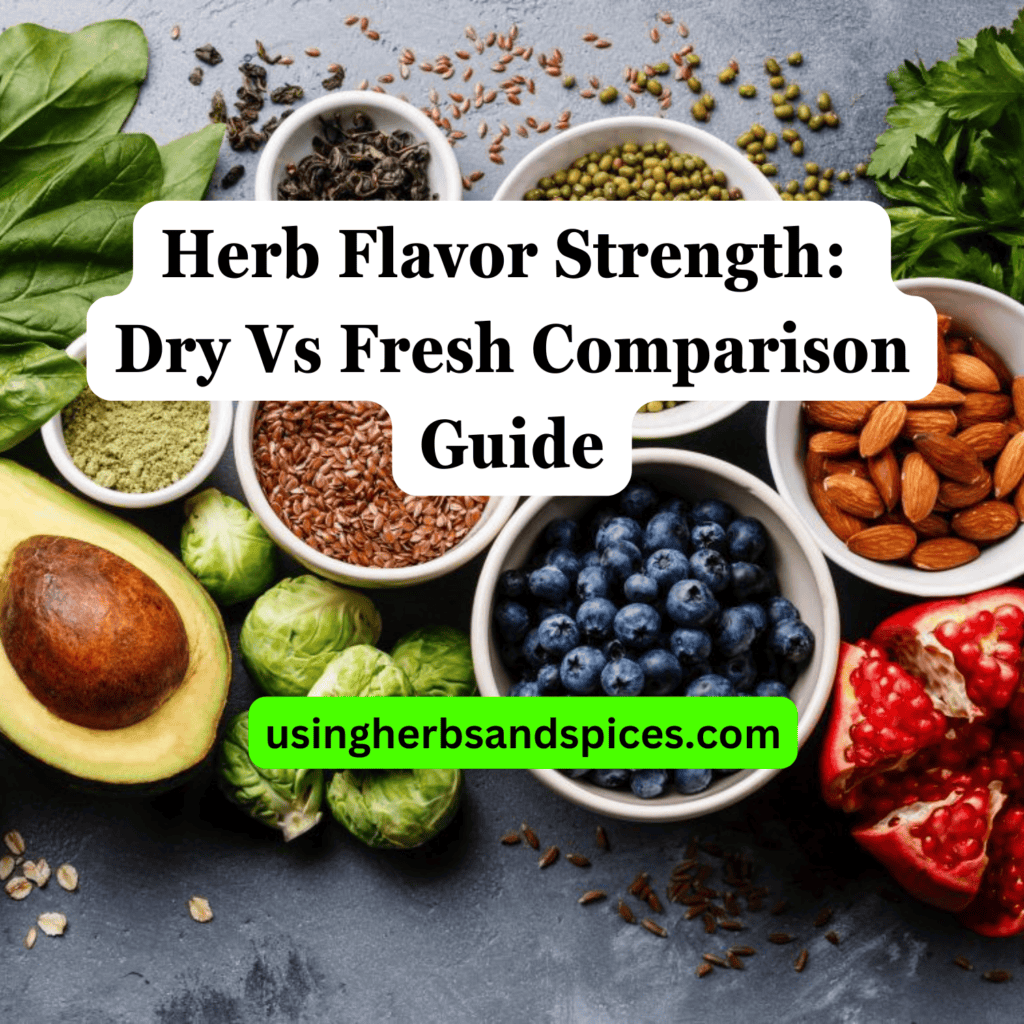SUMMARY: Fresh herbs add vibrant flavors and aromas to your dishes, ideal for when their freshness can shine, while dried spices offer a concentrated, convenient option that’s great for cooking requiring prolonged simmering. Knowing when to use each can seriously elevate your culinary game.
Ever wonder why your home-cooked meals don’t quite hit the mark in flavor?
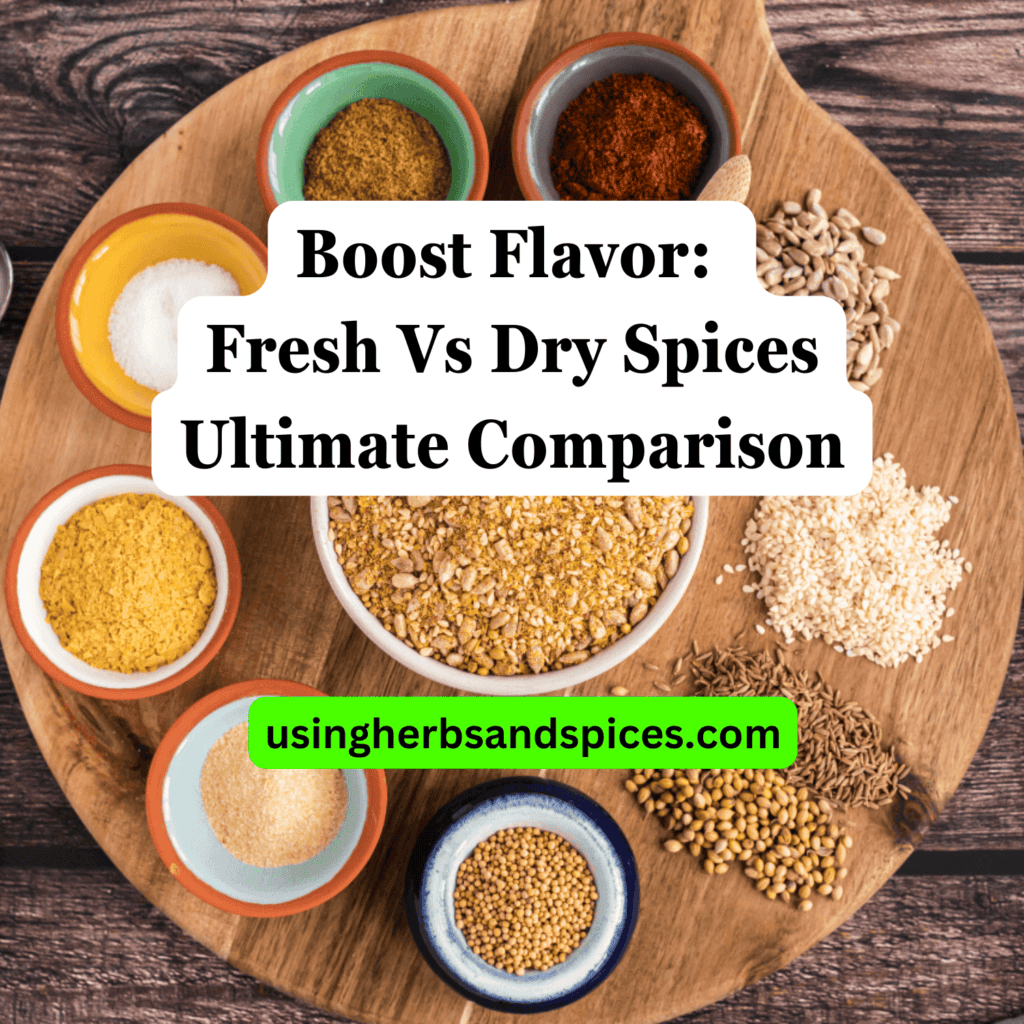
This article is your guide to understanding the power of using the right spices, whether fresh or dry.
- The Potency Puzzle: Fresh Herbs
- Dried Spices: Concentrated and Convenient
- Comparing Shelf Life and Accessibility
- Application in Cooking: Making the Right Choice
Keep reading to boost your culinary creations with the perfect spice choices.
The Potency Puzzle: Fresh Herbs
When it comes to fresh herbs, their greatest asset is their potency. Just plucked from the stem, fresh herbs offer a burst of flavor and aroma that dried herbs struggle to match. This potency isn’t just about the strong flavor; it also includes the vibrancy they add to any dish, both in terms of taste and visual appeal. Fresh herbs, with their nuanced and sometimes delicate profiles, shine brightest in dishes where their flavor can be a centerpiece rather than a background note.
However, this potency comes with a caveat. The very oils that give fresh herbs their distinct flavors are also what make them perishable, requiring proper storage and timely usage. Unlike their dried counterparts, fresh herbs typically last only a week or so in the refrigerator, and their flavors can diminish each day they’re stored. As such, incorporating fresh herbs into your cooking requires a bit more planning to ensure they’re used at their peak of freshness.
Understanding how to harness the potency of fresh herbs means recognizing the perfect moments in your cooking to introduce them. For instance, adding soft herbs like cilantro or parsley towards the end of the cooking process can preserve their vibrant color and delicate flavors. Meanwhile, more robust herbs such as rosemary and thyme can withstand longer cooking times, allowing their full flavor to infuse the dish.
Dried Spices: Concentrated and Convenient
Drying herbs intensifies their flavor, making them more potent than their fresh counterparts. This process not only concentrates the flavors but also extends the spices’ shelf life significantly, ensuring that they remain a reliable staple in any pantry. Dried spices offer a convenience that fresh herbs cannot, being readily available year-round, unaffected by seasonal changes.
The method of drying herbs plays a crucial role in the concentration of their flavors. As the water content evaporates, the essential oils and flavors become more concentrated, giving dried spices their potent taste. This makes them particularly suited for dishes that cook for longer periods, where they can slowly release their flavors, such as in stews, braises, and sauces.
Moreover, the extended shelf life of dried spices, often lasting several years when stored properly, makes them an economical and practical choice for any kitchen. They provide a way to consistently achieve robust flavors in your cooking, without the worry of spoilage that can come with fresh herbs. However, it’s important to note that while dried spices do last longer, they are best when used within a year of purchase to ensure maximum flavor and potency.
Given their concentrated nature, dried spices are used in smaller quantities than fresh. Understanding the balance and ratio when substituting dried for fresh herbs can transform your culinary creations from good to exceptional, allowing for a depth of flavor that complements the dish without overwhelming it.
Comparing Shelf Life and Accessibility
When it comes to the practicalities of incorporating spices into your culinary repertoire, understanding the shelf life and accessibility of fresh versus dried herbs is crucial. Fresh herbs, while vibrant and potent, have a relatively short shelf life, often lasting only a week or two when stored properly in the refrigerator. Their availability can also be limited by seasonal changes, meaning that some herbs might not be readily available throughout the year. In contrast, dried spices offer a much longer shelf life, often remaining potent for up to a year or more when stored in a cool, dark place. This extended shelf life, combined with their year-round availability, makes dried spices a convenient and reliable option for those looking to infuse flavor into their dishes without frequent trips to the market.
Moreover, the accessibility of dried spices extends beyond just their physical availability. For many home cooks and professional chefs alike, the convenience of having a broad spectrum of flavors at one’s fingertips – without the need for immediate use or concern over spoilage – allows for greater experimentation and spontaneity in cooking. Whether planning meals in advance or making last-minute adjustments to a dish, dried spices provide a versatile and practical solution to flavor enhancement. However, it’s important to note that while dried herbs offer convenience and longevity, their fresh counterparts can often impart a fresher, brighter flavor profile that some dishes may benefit from.
To maximize the culinary potential of both fresh and dried herbs, understanding and adapting to their shelf life and accessibility is key. By weighing these considerations, cooks can make informed decisions that elevate their dishes while also accommodating their lifestyle and cooking habits.
Application in Cooking: Making the Right Choice
Choosing between fresh and dried herbs boils down to the type of dish, the cooking method, and the desired flavor intensity. Fresh herbs are ideal for dishes that benefit from a light, bright flavor, such as salads, dressings, and garnishes. Their delicate nature also means they are best added towards the end of the cooking process or used raw to preserve their flavor and color.
In contrast, dried spices, with their concentrated flavors, are better suited for dishes that require cooking over longer periods. This includes stews, braised dishes, and sauces where the dried herbs have time to rehydrate and infuse the dish with their essence. Additionally, dried spices are excellent for creating spice blends and rubs, where their intensified flavors can be fully utilized.
Substituting one form for the other requires a bit of culinary insight. A general guideline is to use one-third the amount of dried herb as you would fresh since dried herbs are more potent. However, this can vary based on the type of herb and the desired flavor intensity, highlighting the importance of adjusting to taste.
The decision to use fresh or dried herbs also extends to personal preference and practicality. While fresh herbs may offer a burst of fresh flavor, their shorter shelf life and sometimes limited availability can be a challenge. Dried herbs, offering convenience and a longer shelf life, make it easier to keep a variety of flavors on hand. By understanding these nuances, you can make more informed choices in your cooking, leading to better-flavored dishes overall.
Fresh vs. Dried Spices: A Guide to Optimal Flavor
In summary, this guide offers an in-depth comparison between fresh and dried spices, outlining essential insights to help you make informed choices to boost the flavor of your culinary creations.
- Fresh herbs offer vibrant flavors, nutritional benefits, and aromatic qualities ideal for dishes where their freshness can shine.
- Dried spices provide concentrated flavors and extended shelf life, making them a convenient staple for a wide range of culinary applications.
- Understanding the shelf life, accessibility, and proper storage of both fresh and dried spices can significantly impact their potency and effectiveness in cooking.
- Choosing between fresh and dried herbs depends on the cooking method, type of dish, and desired flavor intensity, with guidelines available for substituting one for the other.
Boost Flavor: Comparing Fresh Vs Dry Spices FAQs
How do I substitute fresh herbs for dried ones in recipes?
To substitute fresh herbs for dried ones, a general rule of thumb is to use a 3:1 ratio of fresh to dried. Because dried herbs are more concentrated and potent than fresh herbs, you’ll need more fresh herbs to achieve the same flavor intensity. However, the exact amounts can vary depending on the herb in question, so it’s advisable to start with less and adjust to taste.
Can dried herbs go bad, and how can I tell?
Dried herbs can go bad over time, losing their flavor and aroma, though they may not spoil in the way fresh food does. Signs that dried herbs have lost their potency include faded color, little to no aroma when rubbed between your fingers, and a lackluster taste. If your dried herbs don’t noticeably enhance your dish’s flavor, it’s likely time to replace them.
Are there herbs that are better fresh or dried?
Yes, certain herbs are better used fresh, while others lend themselves well to drying. For example, basil, cilantro, and parsley tend to lose a significant amount of their flavor and aromatic qualities when dried, making them much better options for fresh use. On the other hand, herbs like oregano, thyme, and rosemary retain their flavor well when dried and can be used more flexibly in both forms. It’s important to consider the specific flavors and how they will interact with your dish when choosing between fresh and dried herbs.

